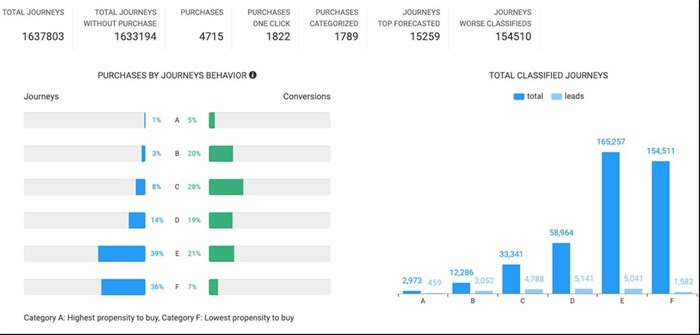
Subscribe & Follow
Jobs
- All-rounder Admin and Customer Service/Support Durban
- Customer Relations Manager – Corporate Accounts Pretoria
- Senior Digital Designer Johannesburg, Cape Town
- B2C CRM and Lifecycle Marketing Expert Cape Town
- Business Development Representative Cape Town
Developing advanced attribution models for the entire customer journey - online to offline

Despite this, the next step in the evolution of intent-based marketing is about developing advanced attribution models that cover the entire customer journey.
These models not only enable brands to accurately model consumers’ online behaviour and attribute credit for conversions to digital channels but also to gain a view of the full funnel across online and offline channels.
They also enable brands to build predictive models on users’ intent, in turn helping them to optimise marketing campaigns from exposure to conversion.
Unravelling the attribution path in digital marketing
Attribution modelling tools analyse a user’s intent while they browse a website and use these intent signals to attribute credit for conversions to digital channels and predict the likelihood of a person converting.
For example, the attribution modelling tool we work with enables us to classify users as journey A, B, C, D, E or F customers, with journey A representing the highest probability of conversion and journey F the lowest.
This solution tracks 35 buying intent signals from each website visitor, including variables such as time on site, pages viewed, time stamp and previous visits.
With over 10 years of refining the algorithm, the tool can effectively predict each user’s level of buying intent according to their online behaviour. This data empowers marketers with insights to attract more A visitors and fewer F visitors.
The journey A audience segment, for example, might make up one percent of the visits but five percent of the sales.
Journey F visitors could comprise 36% of the site visits but only seven percent of the sales.
Attribution modelling enables us to evaluate each source or campaign to compare where customers on different journeys are coming from.
Importantly, we can see this attribution data in real time.

The solution also allows us to look at each campaign or traffic source and determine which proportion of the traffic it generates is assigned to journeys A to F.
This helps us to optimise campaigns around creative executions, landing pages or user targeting, in turn, allowing us to improve the quality of users based on their intent to convert.
The approach is tailored to getting quick marketing insights that allow for on-the-fly optimisation.
Moving towards an integrated online and offline marketing ecosystem
As mentioned earlier, one of the most exciting opportunities from this next-generation approach to attribution modelling and intent-based marketing lies in exploiting offline data.
Most brands gather a wealth of customer data from in-store or call centre interactions. This data, housed in their customer relationship management (CRM) systems, is generally excluded from online attribution reporting.
But with today’s tools, we can use application programming interfaces (APIs) to map CRM data such as email addresses or telephone numbers to user data from platforms such as Meta, Google or TikTok.
We can export all these contacts and use them to improve marketing efficiency—provided users have opted in to allow their data to be used in this manner.
If we’re able to segment prospects in the CRM database according to their propensity to buy, we can empower call centre agents to focus their energies on the customers that are most likely to convert.
We could also feed audience lists into programmatic platforms and use these enriched lists for more effective cross- or upselling.
Another compelling use case is using the list of high-intent users to create lookalike audiences.
With attribution tools maturing and brands starting to harness their power, we are moving towards a Holy Grail in marketing: an integrated view of offline and online customer conversions.
The ultimate goal is to automate data flows across digital marketing, CRM and analytics and attribution platforms.
This enables brands to match offline sales to online leads (and vice versa) and understand the attribution path from first exposure to final sale.

About Grant Lapping
Grant Lapping is currently the digital executive at Midnight, he has worked in digital media and strategy since 2005, and has a holistic perspective on the market due to the roles he has held across the agency, client and publisher spectrum.Related
The new digital dilemma: Proving marketing’s value in a profit-driven world 5 hours Zero-click marketing: The power of walled gardens 28 Feb 2025 #Bookmarks2025: Showcase your digital brilliance as entries open 11 Feb 2025 #BizTrends2025: Grant Lapping | 3 trends dominating search: GEO, social search and voice 5 Feb 2025 Ogilvy Africa Network launches Ogilvy One in SSA with Jason Smit as managing partner 28 Jan 2025 #BizTrends2025: Penquin’s Tyrell Stevens - Predictive personalisation transforming digital marketing 23 Jan 2025 #BizTrends2025: Vodacom’s Andisa Ntsubane – The anatomy of winning brands in 2025 22 Jan 2025 #BizTrends2025: Joe Public’s Abigail Buckley - AI's impact on digital marketing 20 Jan 2025












